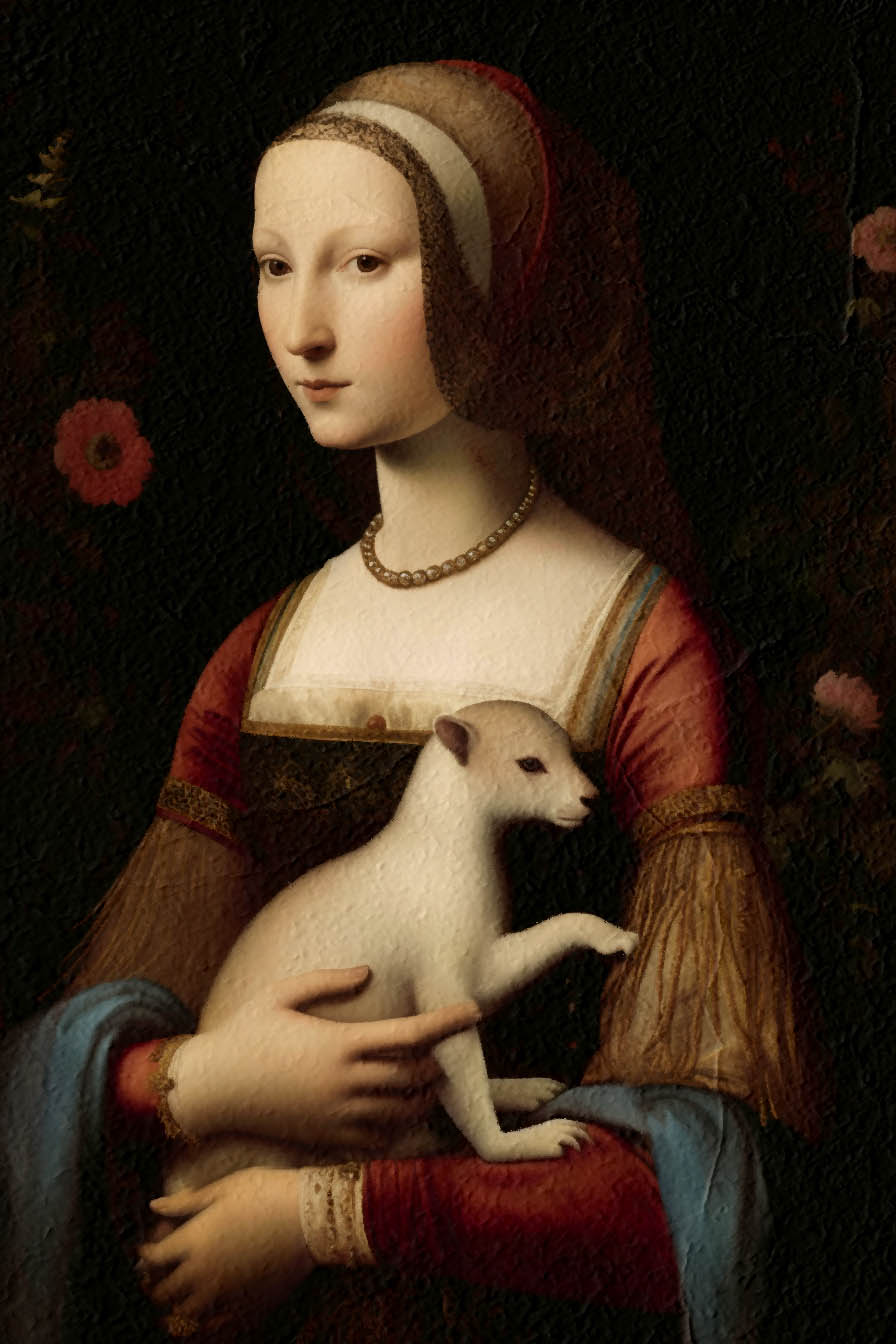Renaissance Digital Art

lady with a Meerkat
Original Renaissance Digital Art Ai
Renaissance Digital Art
Renaissance Digital Art combines the timeless beauty of the Renaissance period with the modern technology and techniques of the digital age. It is an excellent type of art that seamlessly blends traditional artistry with contemporary tools, resulting in stunning and visually captivating creations. This art form allows artists to explore new dimensions, experiment with different styles and mediums, and push the boundaries of creativity.
One of the key strengths of Renaissance Digital Art lies in its ability to bridge the gap between the past and the present. By drawing inspiration from the Renaissance period, artists pay homage to the classical techniques, themes, and aesthetics that defined that era. Simultaneously, they infuse their works with a contemporary flair, incorporating digital tools and software to enhance and transform their visions.
The versatility of digital art allows artists to experiment with a wide range of styles, from hyper-realistic portraits and landscapes to surreal and abstract compositions. The use of digital brushes, textures, and effects enables artists to create intricate details, vibrant colors, and unique visual elements that may not have been achievable using traditional media alone. This fusion of traditional and digital techniques adds a dynamic and captivating quality to Renaissance Digital Art.
Moreover, the digital format of these artworks offers various possibilities for showcasing and distributing the art. Renaissance Digital Art can be enjoyed as wall art, with prints available in different formats such as limited edition prints and canvas prints. These options make it accessible to a broader audience and allow art enthusiasts to bring the beauty of Renaissance-inspired digital creations into their homes.
In addition, the online art market and platforms have made it easier for artists to showcase and sell their Renaissance Digital Art. Auctions and online galleries provide a platform for artists to connect with collectors and enthusiasts worldwide, expanding their reach and potential for recognition.
Sample of Renaissance Digital Art and Artists:
- “The Digital Mona Lisa” by Leonardo da Vinci (reimagined by a modern artist): This reinterpretation of the iconic painting showcases the merging of traditional techniques and digital manipulation, adding a contemporary twist to the timeless masterpiece.
- “The Birth of Venus 2.0” by Sandro Botticelli (reimagined by a digital artist): This artwork takes inspiration from Botticelli’s original painting but adds digital enhancements and modern elements to create a visually striking and thought-provoking piece.
- “Digital Still Life with Flowers” by Rachel Smith: In this artwork, the artist combines traditional still life composition with digital painting techniques to create a vibrant and realistic depiction of flowers. The use of lighting and textures adds depth and dimension to the image.
- “The Last Supper” by an anonymous artist: This reinterpretation of Da Vinci’s “The Last Supper” brings the scene to life through digital manipulation and animation. The artist adds movement and interactivity to the artwork, providing a fresh and engaging experience for viewers.
Stories and History of Renaissance Digital Art:
The emergence of Renaissance Digital Art can be seen as a natural evolution of artistic expression. It reflects the ongoing dialogue between the past and the present, showcasing the enduring influence of the Renaissance period on contemporary art.
The Renaissance period, which spanned from the 14th to the 17th century, was marked by a revival of interest in classical Greek and Roman art, as well as a shift towards humanism and scientific exploration. The artists of that era, such as Leonardo da Vinci, Michelangelo, and Raphael, made significant contributions to the fields of painting, sculpture, and architecture. Their works continue to inspire and captivate audiences centuries later.
With the advent of digital technology, artists gained access to a new set of tools and techniques that allowed them to push the boundaries of creativity and experiment with new artistic possibilities. By incorporating digital tools into their artistic practice, they found innovative ways to reinterpret and reimagine the works of the Renaissance masters.
The stories and history of Renaissance Digital Art are still unfolding as contemporary artists explore and push the boundaries of this exciting art form. With each new artwork created, they contribute to the ongoing dialogue between tradition and innovation, reminding us of the timeless beauty and relevance of Renaissance art in the digital age.

